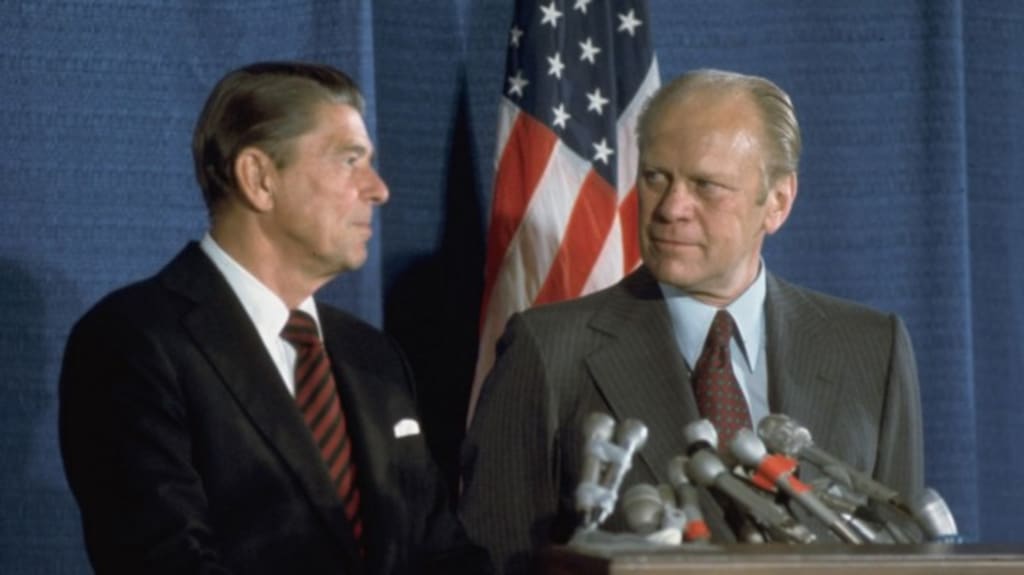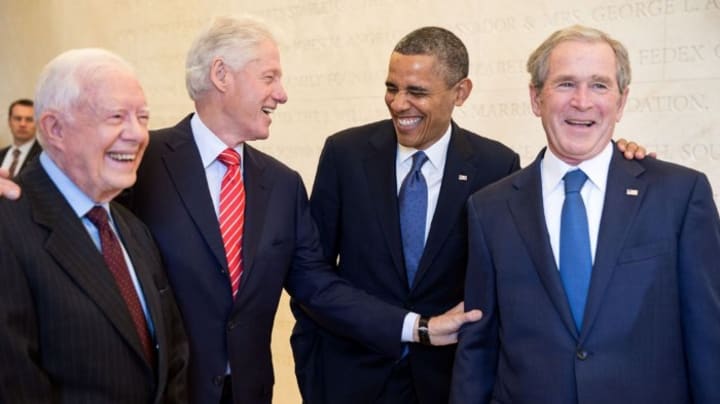
The image of two people simultaneously serving as the President of the United States of America is almost unthinkable. However, this almost came true in 1980. After securing the Republican nomination, Ronald Reagan was set to challenge President Jimmy Carter in the upcoming election. While we know that Reagan would go on to win the Presidency with George HW Bush as his running mate, his first choice for Vice-President would have had an unprecedented impact on American politics.
The Dream Team

Initially, Reagan was quite reluctant to pick Bush as his running mate due to what he felt was a lack of chemistry between the two. Reagan was a famous Hollywood celebrity while Bush was a member of an esteemed political family. The two men were also fierce rivals who fought hard against one another for the nomination.
Reagan also feared that Bush’s moderate stance on matters such as abortion would drive away the Conservative vote. So, after pondering over other names, Reagan and his team decided on having Gerald Ford as his running mate.
This idea was unheard of. After all, Ford had already been President. Taking over from Richard Nixon following his controversial resignation, Ford was defeated in 1976 by Jimmy Carter. Following his defeat, Ford’s role in politics was minimal but he had flirted with the idea of challenging Carter.
Ford had wanted to change the perception that he was an “accidental President” who only got the job because Nixon resigned. However, he eventually decided not to pursue this and would support the future nominee. Despite this, Ford was enticed by Reagan’s idea to make him his running mate.
Although such a plan seemed very farfetched, it was realistically possible and made sense. Having served only one term as President, Ford could assume the Vice-Presidency and still remain in the line of succession. Ford’s experience as a former President would also serve to balance out the relative political inexperience of the former actor, Reagan.
Hailing from Nebraska, Ford could also appeal to Mid-Western voters in a way the Californian Reagan could not and his slightly more moderate position would balance out Reagan’s more Conservative leanings.
In many ways, this was a match made in heaven: The popular celebrity and the former President taking the White House together. However, these plans would soon fall through.
Was A Co-Presidency Feasible?

As time went on, it became apparent that Reagan and Ford had very different perceptions of what this partnership meant. Reagan envisioned this union as the typical relationship between a President and Vice-President with the added bonus that his VP had the experience of holding the country’s highest office.
Ford on the other hand saw his alliance with Reagan as his chance to reclaim some vestige of the Presidency. Having already been seen as the “accidental President”, Ford could not bear to now be seen as the first President to get a demotion. So, he sought to leverage his position as a former President to essentially run America alongside his successor on a 50–50 basis.
With allies like Dick Cheney and Henry Kissinger in his corner, Ford wanted to take charge of foreign policy and leave domestic matters to Reagan. Such an idea was not well received by Reagan and his allies who feared that such an arrangement would mean that the actual President was giving up power to his VP.
In an interview with Walter Cronkite, Ford was asked about his vision of his alliance with Reagan. Cronkite who was the one who coined the term “Co-Presidency”, asked Ford if that was the arrangement he sought. Ford did not explicitly agree to it but clearly did not deny that he wanted a role bigger than that expected of the Vice President.
Reagan had also realized that such a plan would be doomed from the start. Although it looked good on paper, it would not be feasible for him to give up so much of his own power to Ford. The intricacies of such an arrangement would also be very complicated as there was simply no precedent for it.
Ford would soon come to the realization that his vision of a Co-Presidency would not come to pass and despite the buzz generated by his interview and the prospect of a Reagan-Ford “dream ticket”, Reagan would go on to select George HW Bush as his running mate in the end.
Will We Ever See A Co-Presidency?

To date, no former President has ever gone on to serve in the administrations of their successors. Aside from Andrew Johnson who was elected to the Senate and William Howard Taft who became Chief Justice after their respective Presidencies, no other former President has ever taken public office after leaving the White House.
Although not impossible in theory, such an arrangement would be extremely difficult in practice. Issues such as a former President’s role in the line of succession would affect their ability to serve in certain cabinet positions. Aside from that, there is the issue of pride.
It is highly unlikely that anyone who had once attained the highest office in the land would willingly come back and serve in a lesser capacity. Certainly, they would expect for allowances to be made to give them greater influence by virtue of being a former President.
Unless legislation is passed to clearly set out the roles a former President can play in another administration, the story of Ronald Reagan and Gerald Ford’s failed “dream ticket” and co-Presidency aspirations would show how unlikely it would be for two people to run America at the same time.
Since then, no other President or candidate has ever considered appointing their predecessors to any major role in their administration. Thus, the brief alliance between Reagan and Ford is the closest America has ever come to having two Presidents at once.
About the Creator
Isa Nan
Written accounts of life, death and everything in between






Comments
There are no comments for this story
Be the first to respond and start the conversation.